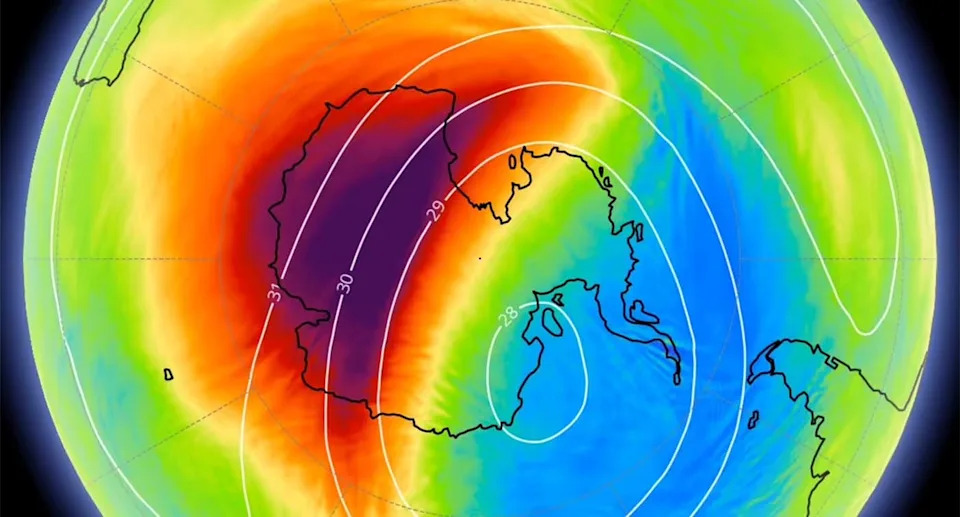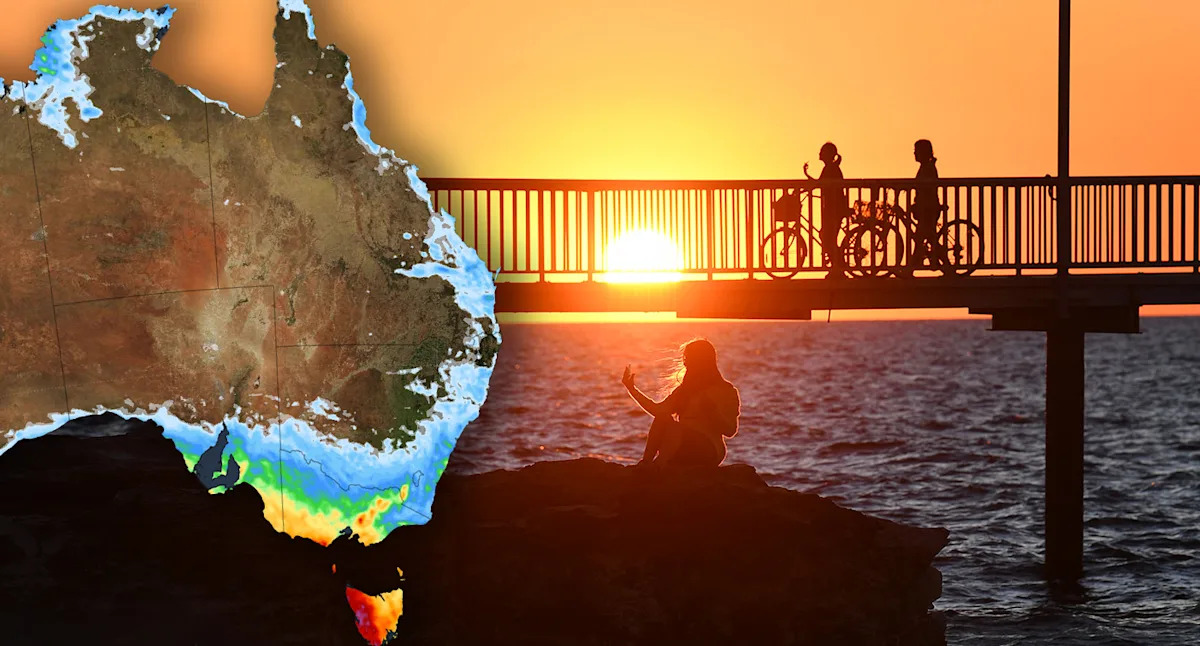An extremely rare weather phenomenon taking place over Antarctica could potentially alter the spring and summer forecasts in some parts of Australia. Sudden stratospheric warming (SSW) events are unusual in the southern hemisphere and previous events have led to warmer and drier conditions across south-east Australia – even intensifying bush fires.
Temperatures in the stratosphere 30km above the south pole have increased by 35C over a matter of days and it’s still rising, Dr Martin Jucker, lecturer in atmospheric science at UNSW, told Yahoo News. It’s brought the usual -50C temperature to about -15C – so it’s “still pretty cold”, Dr Jucker said.
For it to be considered a SSW event, the warming must also coincide with a slowing of the winds in the polar vortex.
Just weeks ago a negative Indian Ocean Dipole (IOD) was announced by the Bureau of Meteorology, which resulted in predictions of a wetter than average summer.
With two major climate drivers delivering somewhat opposing conditions – what does that mean for Australia?

Areas of yellow, red and purple show the current levels of warming over the south pole. Source: Weatherzone.com.au
Wet summer forecast could change
The last SSW event occurred in 2019, coinciding with the Black Summer bushfires and likely making them more intense. But that won’t necessarily be the case this year, Dr Jucker said.
“The big difference to this year is that in 2019, we had three years of drought before this happened, and the fires were already burning. Whereas this year, we are just coming out of the wettest year on record,” he said.
“Now, what the Bureau of Meteorology has forecast for a while now, really, is a wet spring and also a wetter summer. But this could potentially change now because if we add this drying effect, if you like, then it might not be as wet. But the problem is, what wins?
“There’s these two opponents, and who will win? I don’t know.”
One part of Australia to miss out on warming conditions
While SSW events drive warmer weather conditions, one part of Australia could actually see an increase in rainfall, Professor Julie Arblaster from Securing Antarctica’s Environmental Future at Monash University told Yahoo.
“For most of Australia, it’s hotter and dryer, but Western Tasmania is the one part of Australia that has wetter conditions when we have these southern stratospheric warmings or weakenings of the vortex.
“Western Tasmania and New Zealand get wetter conditions because it does shift the westerly winds closer to Australia. And so then you get more of these fronts and rain bearing systems that are hitting the mountains in Western Tasmania and dumping their rainfall,” she said, adding that Eastern Tasmania usually receives the same drier conditions as the rest of the mainland.
A Bureau of Meteorology spokesperson said while this year’s event is currently weaker than those which occurred in 2002 and 2019, SSW events have the “greatest impact” when they occur in spring.
“In the last 45 years, there have been three moderate to major SSWs in the southern hemisphere – in 1988, 2002 and 2019. Only the 2002 event is considered a major event with the reversal of the vortex winds,” the spokesperson said.
Dr Jucker said there was one positive impact of the SSW event – the impact on the ozone.
“Ozone destruction, which happens every year in the spring, needs cold temperatures. And now if these temperatures are suddenly much warmer, ozone destruction can stop. And so that might be good for the ozone hole,” he said.
Do you have a story tip? Email: newsroomau@yahoonews.com.
You can also follow us on Facebook, Instagram, TikTok, Twitter and YouTube.


